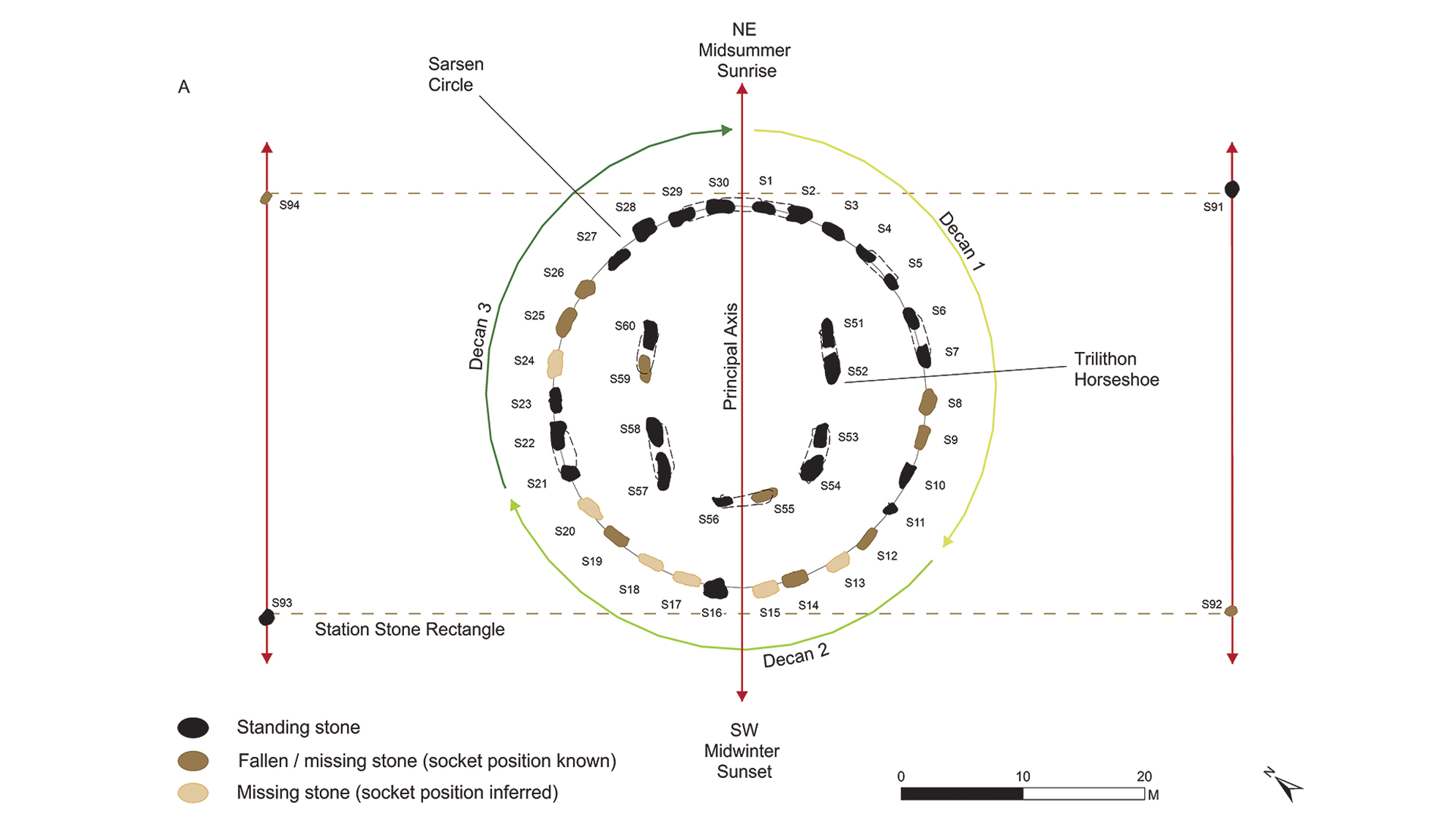Stonehenge may have been used as a solar calendar
The monument's stones would have kept the days of the week and the seasons in order.

Stonehenge may have been used as a solar calendar, with each of the stones representing a day and sections of the circle of stones possibly corresponding to weeks, an archaeologist now says.
An accurate solar calendar consists of about 365.25 days and is important for preventing the seasons from falling out of place (such as having winter during June). Meanwhile, the Gregorian calendar used in much of the world today consists of 365 days, with a leap day every four years to account for the quarter of a day.
Archaeologists have puzzled over the purpose of the 5,000-year-old monument and how it would have been used over time, with a range of ideas being proposed such as Stonehenge being a burial ground to it being used for religious ceremonies to it being used as a calendar.
"Scholars have long seen in the monumental composition of Stonehenge evidence for prehistoric time reckoning— a Neolithic calendar. Exactly how such a calendar functioned, however, remains unclear" study researcher Timothy Darvill, an archaeology professor at Bournemouth University in the U.K., wrote March 1 in the journal Antiquity.
Related: In photos: A walk through Stonehenge
Understanding the calendar
To understand how the Stonehenge calendar worked, Darvill looked at the numerology (the study of the meaning of numbers) of the stones themselves. Stonehenge had 30 large 'sarsen' stones, linked together at the top with 30 stone lintels, wrote Darvill, noting that today some of these stones are missing or have toppled over. These 30 stones would have represented 30 days. If you multiply this by 12m it gives you 360 days, wrote Darvill.
Inside this sarsen circle were 10 stones that were spaced apart in groups of two, resulting in five pairs of stones that may have represented five additional days — giving 365 days, Darvill said.
Sign up for the Live Science daily newsletter now
Get the world’s most fascinating discoveries delivered straight to your inbox.

Additionally, there are four "station stones," as archaeologists call them, that are located outside the sarsen circle. These four stones could have indicated the need to add a day to the calendar every four years — resulting in a solar year of 365.25.
Looking at the sarsens, Darvill noted that two of the stones in the circle, sometimes called S11 and S21 by archaeologists, are thinner than the other stones; they also have a larger gap between them and the next stone compared with the other stones. These differences suggest that the people who constructed Stonehenge may have seen every 10th day as being important — possibly representing a "week" of sorts, Darvill said. "The months are each divided into three weeks of 10 days," wrote Darvill.
Scholars have long known that Stonehenge was built to align with the winter and summer solstices; Darvill thinks this alignment would have helped people to use the calendar correctly. People could check that they were keeping track of time correctly by seeing if the alignments occurred when they were supposed to.
Creation of calendar
Stonehenge was constructed between roughly 3000 B.C. and 2000 B.C., and was changed over time. The portions of Stonehenge that seem to form a calendar were constructed between roughly 2620 B.C. and 2480 B.C., noted Darvill. This dating suggests that Stonehenge wasn't originally built to be used as a solar calendar.
When Stonehenge was first constructed, people were possibly more concerned about the phases of the moon; and that over time, they became more concerned with the solar calendar, wrote Darvill. Writing had not yet spread to Britain so it is hard to say why this change occurred. One possibility is that religious beliefs changed to put more emphasis on the sun and its movements.
Darvill isn't certain how and why this solar calendar was developed. Solar calendars were being developed in Mesopotamia and Egypt at around the same time as Stonehenge was constructed, he added. Perhaps, Darvill said, the idea of the solar calendar may have traveled to Britain through long-distance trade routes. It's also possible that people in Britain developed the solar calendar without knowledge of similar developments in the Middle East, wrote Darvill.
The research was recently published and it remains to be seen what reception it will receive from other scholars.
Originally published on Live Science.

Owen Jarus is a regular contributor to Live Science who writes about archaeology and humans' past. He has also written for The Independent (UK), The Canadian Press (CP) and The Associated Press (AP), among others. Owen has a bachelor of arts degree from the University of Toronto and a journalism degree from Ryerson University.










